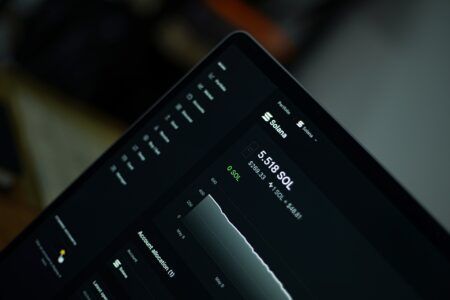In a recently published blog post, popular cryptocurrency exchange Bitfinex announced a new way for users to place orders. The launch, part of the “Honey Framework” toolkit, will allow users to program their own order types.
This new feature will provide greater functionality for high frequency and high-volume traders alike. The first addition – launched this week – to the Honey Framework is “an Algorithmic Order Library for creating custom, complex order types for the Bitfinex platform.”
Not to be confused with the “HoneyMiner,” the Honey Framework is Bitfinex’s “open-source toolkit for traders to develop and implement custom order types & trading strategies on the Bitfinex platform.”
This toolkit was announced in March of 2018. Right now, the Algorithmic Order Library is the only feature available, but in the future Bitfinex plans to launch an open marketplace that will allow traders to buy and sell strategies, signals, or order types.
Bitfinex’s Algorithmic Order Library takes the base set of orders and allows users to create more complex ones. Already available, users can utilize Bitfinex’s two new open source libraries: bfx-hf-algo and bfx-hf-algo-server. These repositories can be browsed, forked, and used by anyone.
Currently, a major feature lacking from cryptocurrency exchanges is variety of order types. Most cryptocurrency exchanges only facilitate market, limit, and stop-limit orders, but those familiar with legacy trading platforms know there are many more. This launch of open source order types will continue to propel large traders towards Bitfinex.
Complex Orders
Bitfnex’s Algorithmic Order Library incluces Iceberg, TWAP, and Accumulate/Distrbiute orders. As Bitfinex describes them:
- “Iceberg allows you to place a large order on the market while ensuring only a small part of it is ever filled at once. By enabling the ‘Excess As Hidden’ option, it is possible to offer up the remainder as a hidden order, allowing for minimal market disruption when executing large trades.”
- “TWAP spreads an order out through time in order to fill at the time-weighted average price, calculated between the time the order is submitted to the final atomic order close. The price can be specified as a fixed external target, such as the top bid/ask or last trade price, or as an explicit target which must be matched against the top bid/ask/last trade/etc.”
- “Accumulate/Distribute allows you to break up a large order into smaller randomized chunks, submitted at regular or irregular intervals to minimize detection by other players in the market.”
Bitfinex, as CryptoGlobe covered, recently suspended all fiat deposits at a time in which bitcoin’s USDT risk premium surged to over $100. The company later on issued a statement to the public, and later on launched a “new, improved” fiat deposit system.
The exchange has also been moving into the decentralized cryptocurrency exchange (DEX) space, as it’s behind both EOSfinex and Ethfinex.








